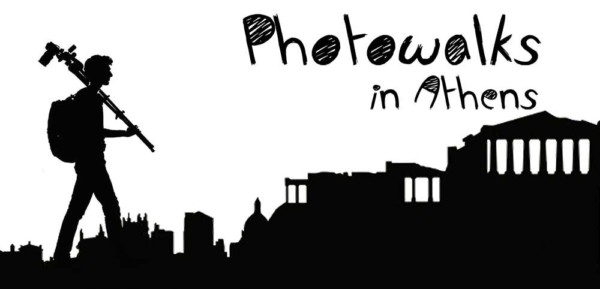Kallimarmaro – The Panathenaic Stadium of Athens.
A very photo-inspiring visit among our Photo Walks!
This huge marble structure set in a small valley by Ardittos Hill occupies the exact site of the original Panathenaic Stadium which represents probably one of the major public works projects of Athenian statesman Lykourgos, built in 330/29 BC for track events in the Greater Panathenaia festival. Before this stadion was built these events were held in the Ancient Agora, although some scholars argue for the Classical Agora as the setting. As there is no physical evidence to support this universally held belief. Professor David Romano (University of Pennsylvania) has argued instead that Lykourgos stadion was built actually on the Pnyx hill instead of here.
The earliest stadion was built in the natural gully between Ardittos Hill to the west and another hill to east. The plan of the stadion consisted of a dromos or flat track for running events, with a rectangular theatron surrounding it for seating. The structure is open at the north end. Repairs were undertaken c. 250/225 BC and again in the earlier Roman period. By Hadrian’ s reign (AD 124 – 138) the stadion had been reconfigured for use for gladiatorial contests.
The Athenian sophist and magnate Herodes Atticus constructed a new stadium in Pentelic and Hymettan marble ashlar masonry between AD 139/40 and 143/4 (finished in time for the celebration of the Panaheniac festival), in the form of Roman- style stadium with a semicircular sphendone and slightly curving sides.
The central spine of the track had at least one Apollo and Hermes double – headed herm (now in the National Museum). There was a vaulted tunnel (vomitorium) with an L-shaped plan for the participants entering the stadion from the southeast. The structure measures 204×83 m. The 66 separate seating blocks are divided into three sections. Two diazomata connect them. It seated at least 50.000 spectators, the same capacity as the Colosseum in Rome!
According to Katherine Walsh (Institute of Fine Arts, New York University) this monument and his Odeion were used as an architectural means of self – representation for Herodes Attikos. The stadium makes allusions to the Classical past (i.e. the use of marble ashlar masonry instead of concrete: the lack of extensive vaulting and the access to the cavea by a vomitorioum: the used of carved owls to decorate the cavea) but at the same time is unmistakably contemporary (i.e. scale: curved sphendone, provisions for protecting the spectators from the wild animals used in the spectacles held here). It is an impressively old-fashioned structure which attempts to find the middle ground between the activities of two conflicting cultures (the use for the traditional contests of the ancient Panathenaic festival vs. the use for Roman spectacles).
The stadium was gradually destroyed over the years by robbing of its marble and other stone for later structures. In the process it was filled in gradually with debris. At the same time as the stadium was built, a three arched bridge was constructed over the Ilissos river. This stood until 1778, when it was destroyed in order to use the building material in the new Ottoman enceinte, the Serpentzes.
On the eastern hill there is a long, oblong foundation of concrete and poros limestone, which may be have been for the tomb of Herodes Attikos, mentioned by Philostratos. Walsh believes that this tomb` s superstructure took the form of monumental altar. This structure was excavated in 1904. Jennifer Tobin (University of Illinois – Chicago Circle), on the other hand, argues with little hard evidence that he was buried beneath the dromos of the stadium. On the western Ardittos hill was the Temple of Tyche.
The area of stadium was known during the Ottoman period as a haunt of witches, where they were thought to perform their witchcraft. Between 1869 – 1870 Ernst Ziller excavated the Stadium. Later, King George I expropriated the land for the state. The monument was restored in 1895 by Anastasios Metaxas, using Ziller` s plans at a cost of 4 million drachmas. As it is clad in marble from Mt. Hymettos it is called Kalimarmaro. On 5 April 1896 it was dedicated for first meeting of the revival of the modern Olympics.
The Stadium is the finishing point for the contemporary Marathon race which was held each October. This is a modern reenactment (first held during the inaugural modern Olympic Games, staged in Athens in 1896) of the run of the Athenian hoplite (heavily armed soldier) Pheidippides who, in 490 BC, sped from the battlefield at Marathon in northeastern Attica, where the Athenians and their allies the Plataians had just defeated the superior forces of the Persian King Darius to announce to his fellow citizens that the victory was theirs. He than died immediately from exhaustion. The official distance of the route from the ancient bridge at Marathon to the Stadium is 42.2 km (26.2 miles), which was codified for the 1924 Olympic Games held in Paris. (athens-greece.us)










